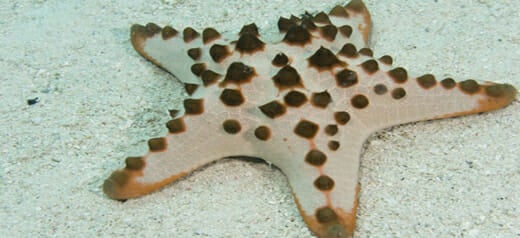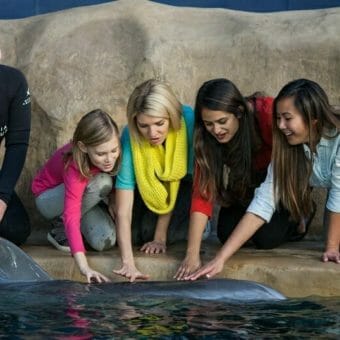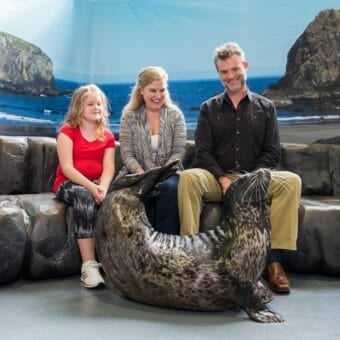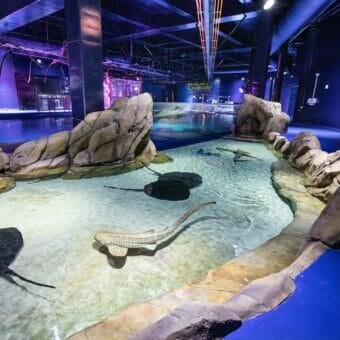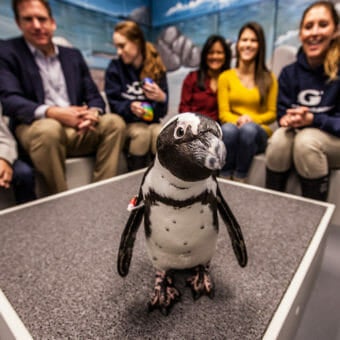-
Size
Up to 12 inches (30 cm) across -
Diet
Sponges and detritus -
Range
Indo-Pacific -
Habitat
Coral reefs and seagrass beds
Physical Characteristics
- Coloration ranges from ivory and pale shades of yellow to pink and red-brown, with dark, pointed projections arranged regularly along the arms and central disk.
- The body is heavy, arms are thick and tapering.
- Tube feet can range in color from pale pink to lavender or violet.
- Reaches 12 inches (30 cm) across.
Animal Fact
The chocolate chip sea star eats by extending its stomach out of its mouth, covering food, and digesting it externally.
Diet / Feeding
- Diet consists of sponges and detritus. Will consume both plant and animal material.
- The mouth is located ventrally (underneath). The chocolate chip sea star eats by extending its stomach out of its mouth, covering food, and digesting it externally.
Range / Habitat
- Occurs in the Indo-Pacific, particularly the Philippines.
- Found on coral reefs and in seagrass beds to depths of about 100 feet (30.5 m).
Reproduction & Growth
- Reproduce by broadcast spawning: males and females release sperm and eggs directly into the water.
Conservation Status
- “Not Evaluated” on the IUCN Red List.
Additional Information
- Also called the “knobbly sea star” and the “horned sea star.”
- Like all sea stars, the chocolate chip sea star can regenerate lost limbs, as long as the central disk of the body is intact. Rare specimens have been found with four or six arms instead of the usual five.
Sources
- www.sea.sheddaquarium.org
- Reef Creature Identification, Tropical Pacific. Humann, P. and Deloach, N.
- Invertebrates, 2nd Edition. Brusca, R.C., and Brusca, G.J.
- www.microscopy-uk.org
